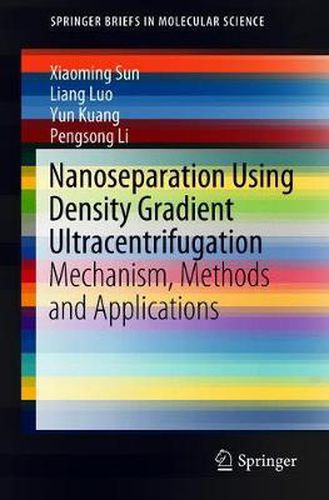Readings Newsletter
Become a Readings Member to make your shopping experience even easier.
Sign in or sign up for free!
You’re not far away from qualifying for FREE standard shipping within Australia
You’ve qualified for FREE standard shipping within Australia
The cart is loading…






This title is printed to order. This book may have been self-published. If so, we cannot guarantee the quality of the content. In the main most books will have gone through the editing process however some may not. We therefore suggest that you be aware of this before ordering this book. If in doubt check either the author or publisher’s details as we are unable to accept any returns unless they are faulty. Please contact us if you have any questions.
This brief introduces the classification and mechanism of density gradient ultracentrifugation (DGUC) method with rich examples showing the versatility of such an efficient separation technique. It also gives a strict mathematical description and a computational optimization model to predict the best separation parameters for a given colloidal system. The concept of Lab in a tube is proposed in the last chapter, which allows the size-property relationship investigation, synthetic optimization and reaction/assembly mechanism exploration etc.
$9.00 standard shipping within Australia
FREE standard shipping within Australia for orders over $100.00
Express & International shipping calculated at checkout
This title is printed to order. This book may have been self-published. If so, we cannot guarantee the quality of the content. In the main most books will have gone through the editing process however some may not. We therefore suggest that you be aware of this before ordering this book. If in doubt check either the author or publisher’s details as we are unable to accept any returns unless they are faulty. Please contact us if you have any questions.
This brief introduces the classification and mechanism of density gradient ultracentrifugation (DGUC) method with rich examples showing the versatility of such an efficient separation technique. It also gives a strict mathematical description and a computational optimization model to predict the best separation parameters for a given colloidal system. The concept of Lab in a tube is proposed in the last chapter, which allows the size-property relationship investigation, synthetic optimization and reaction/assembly mechanism exploration etc.